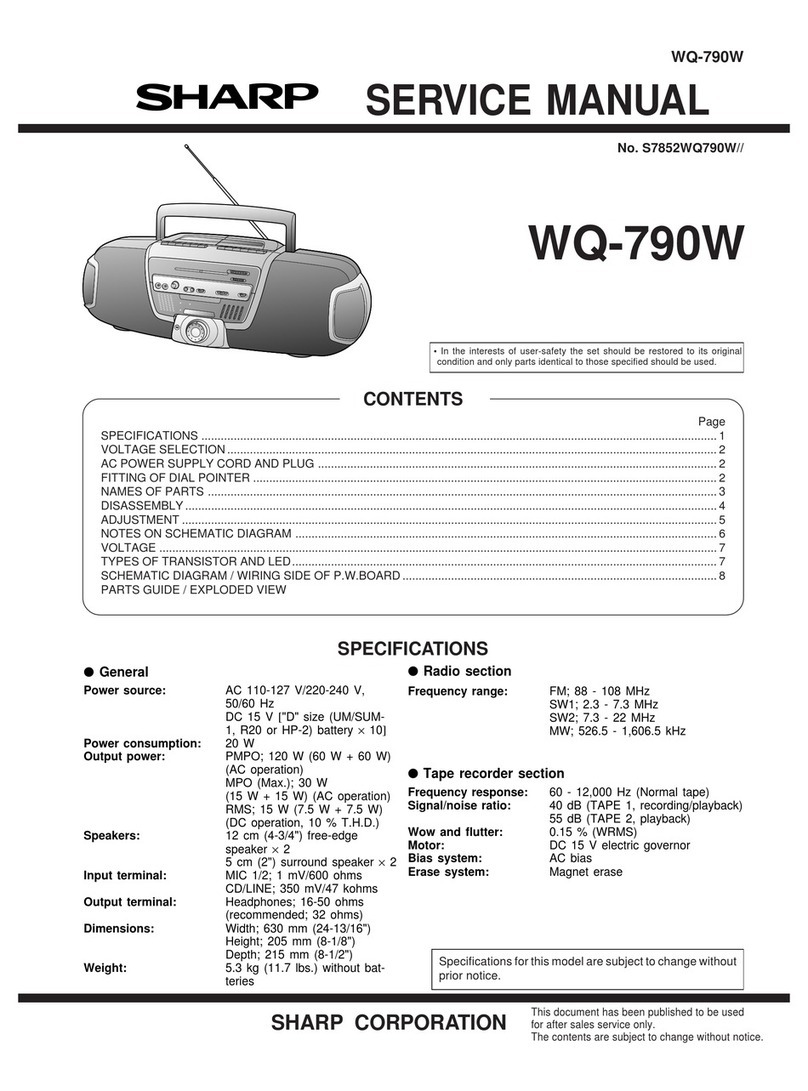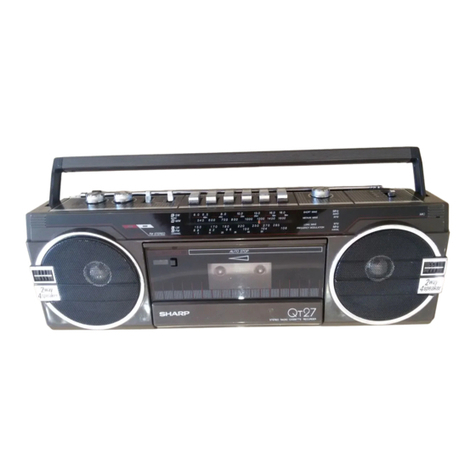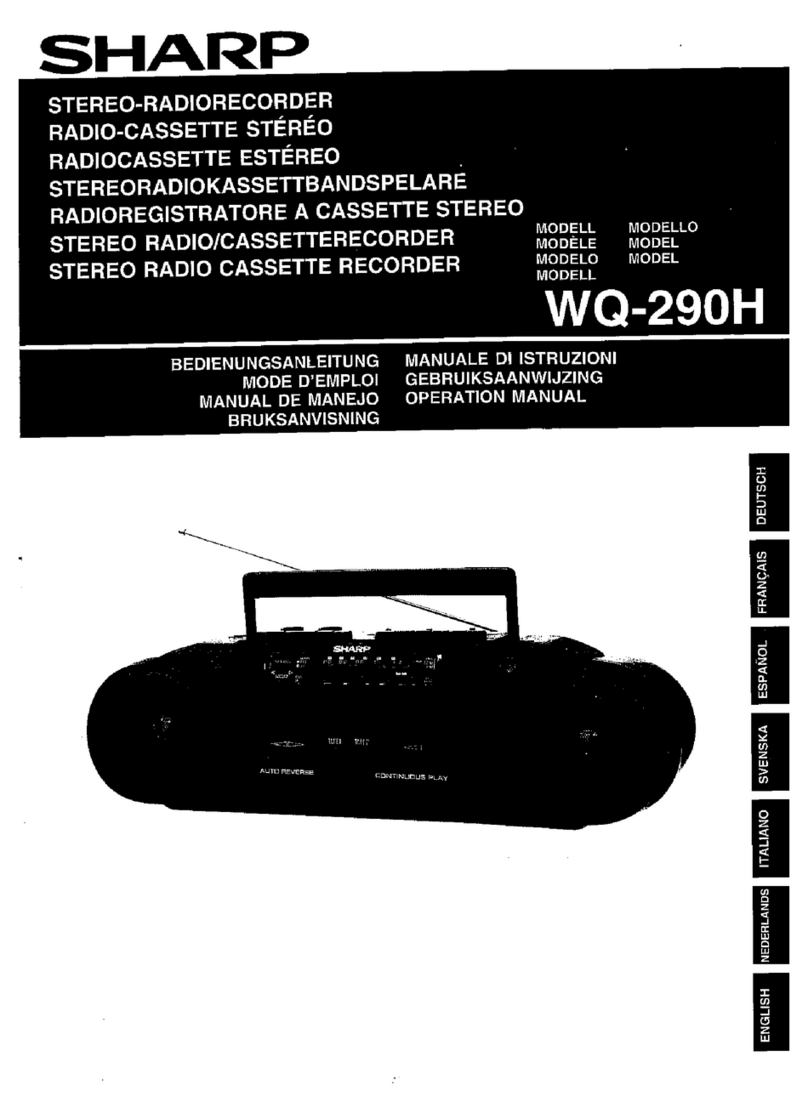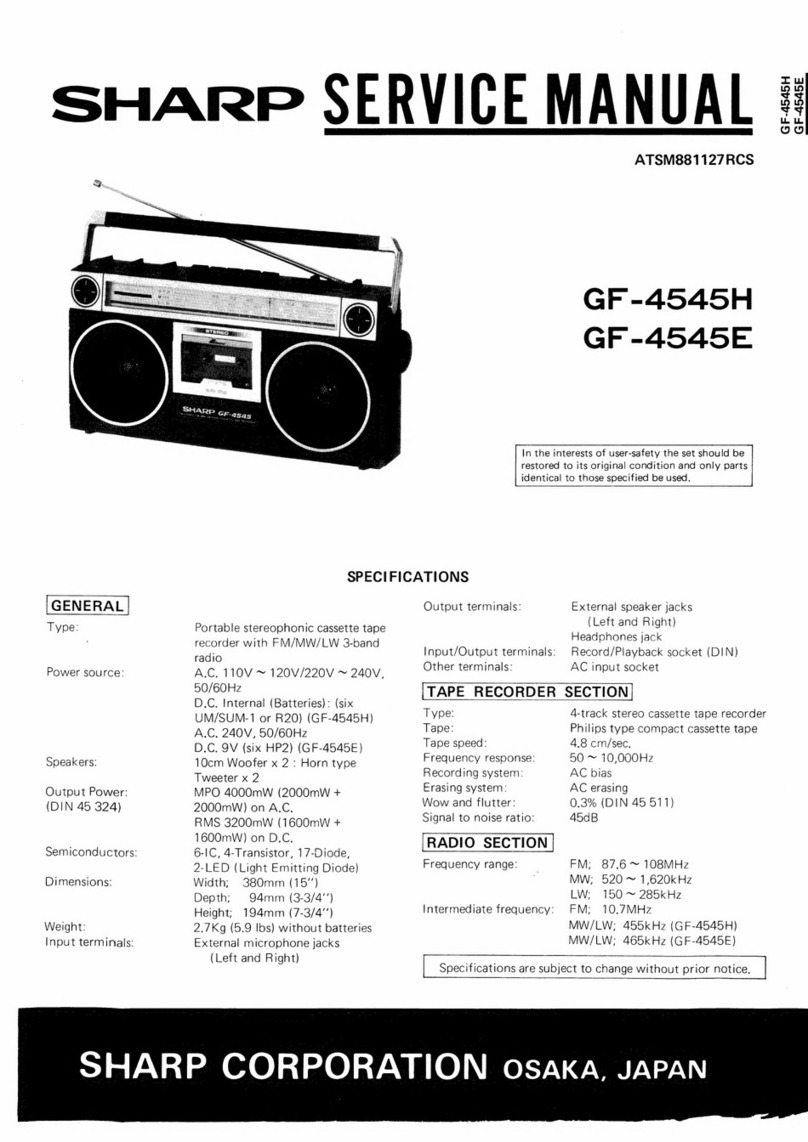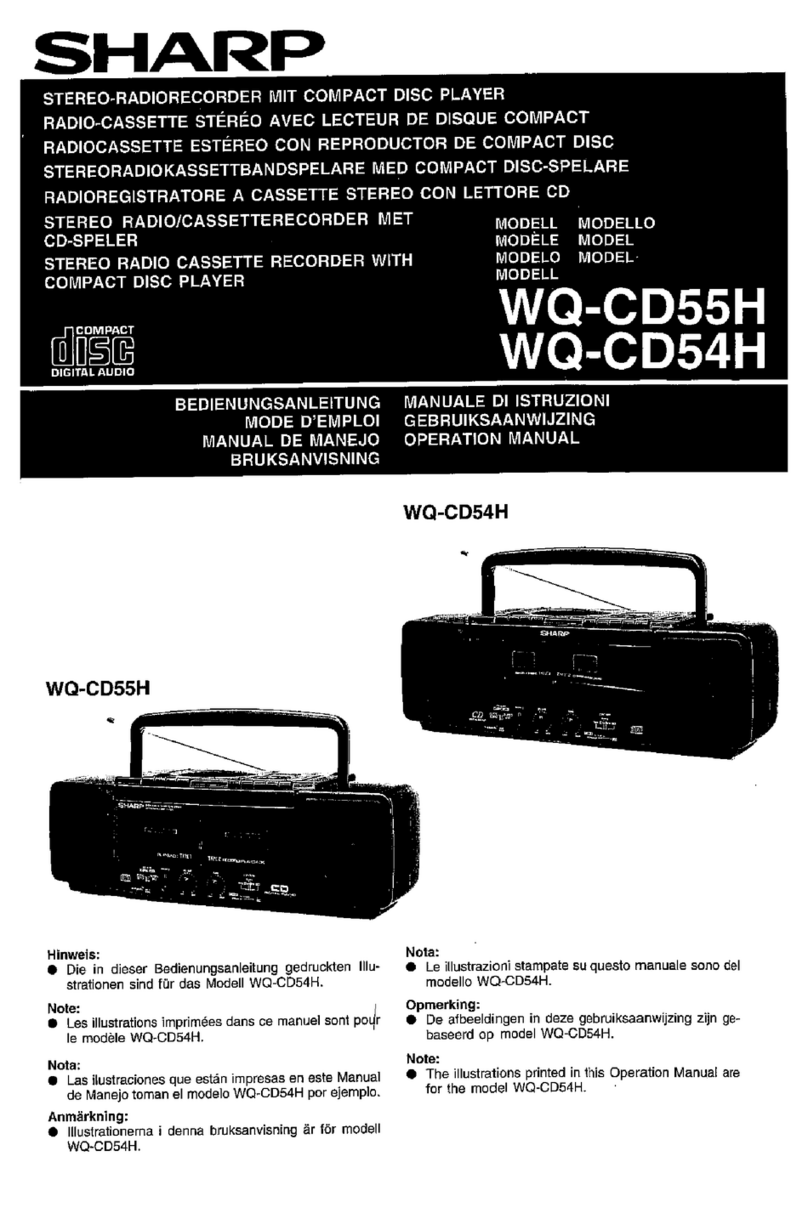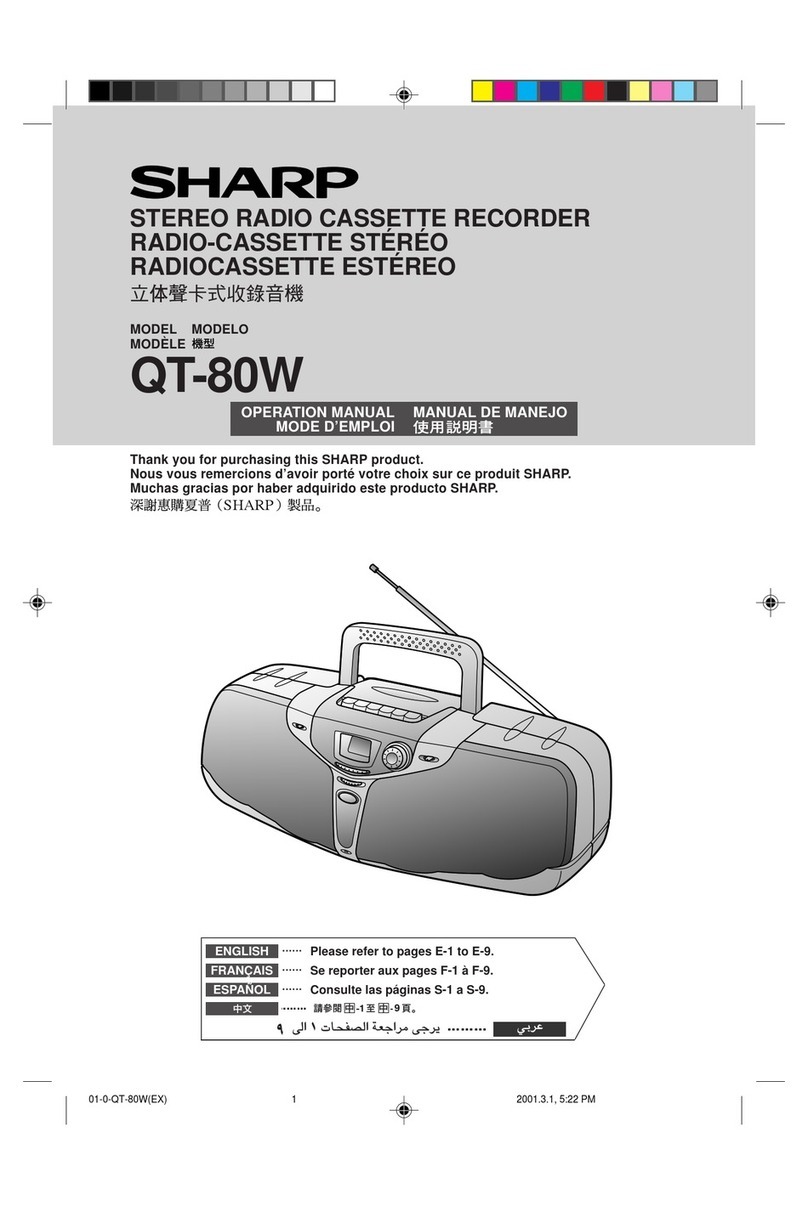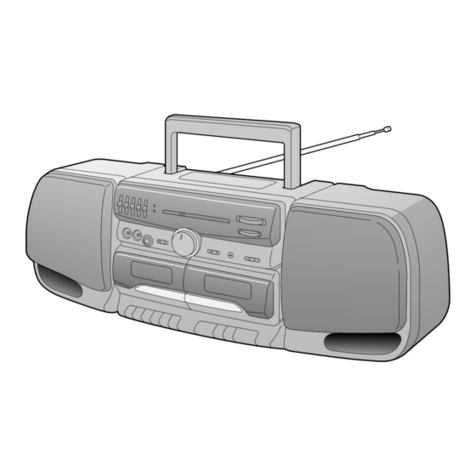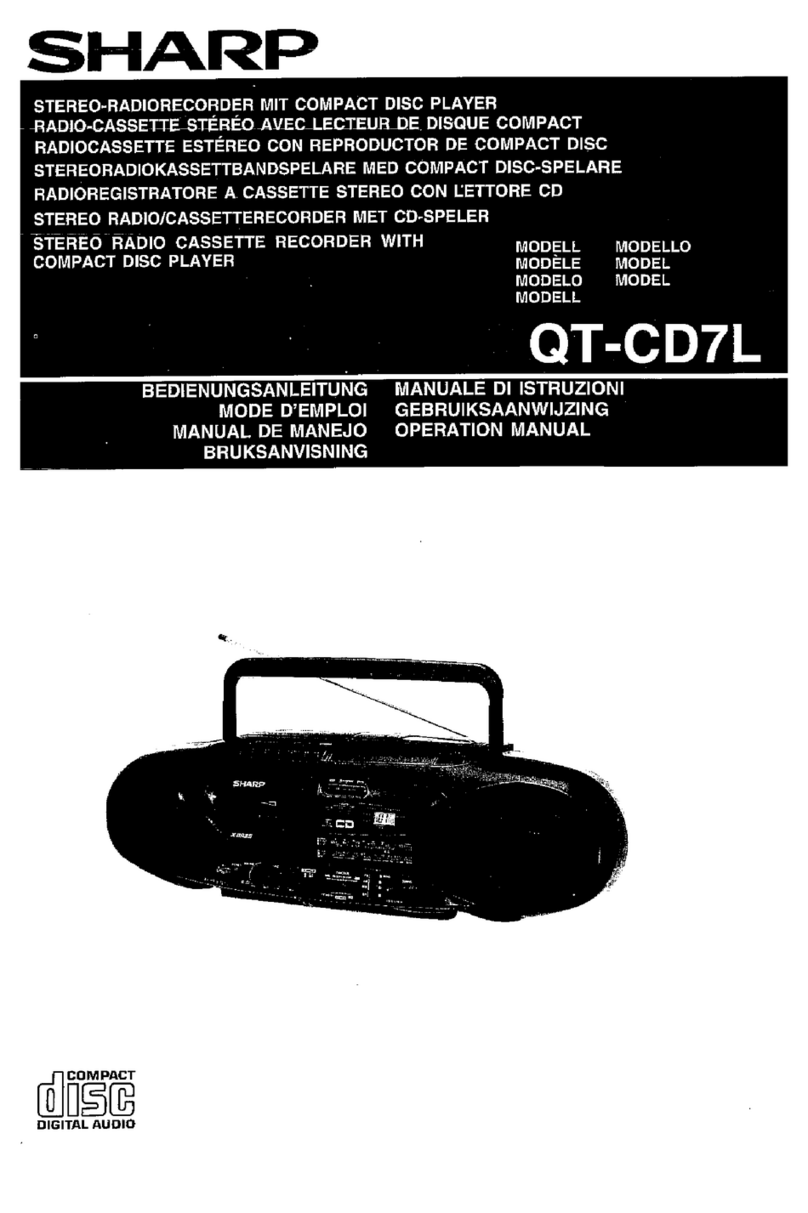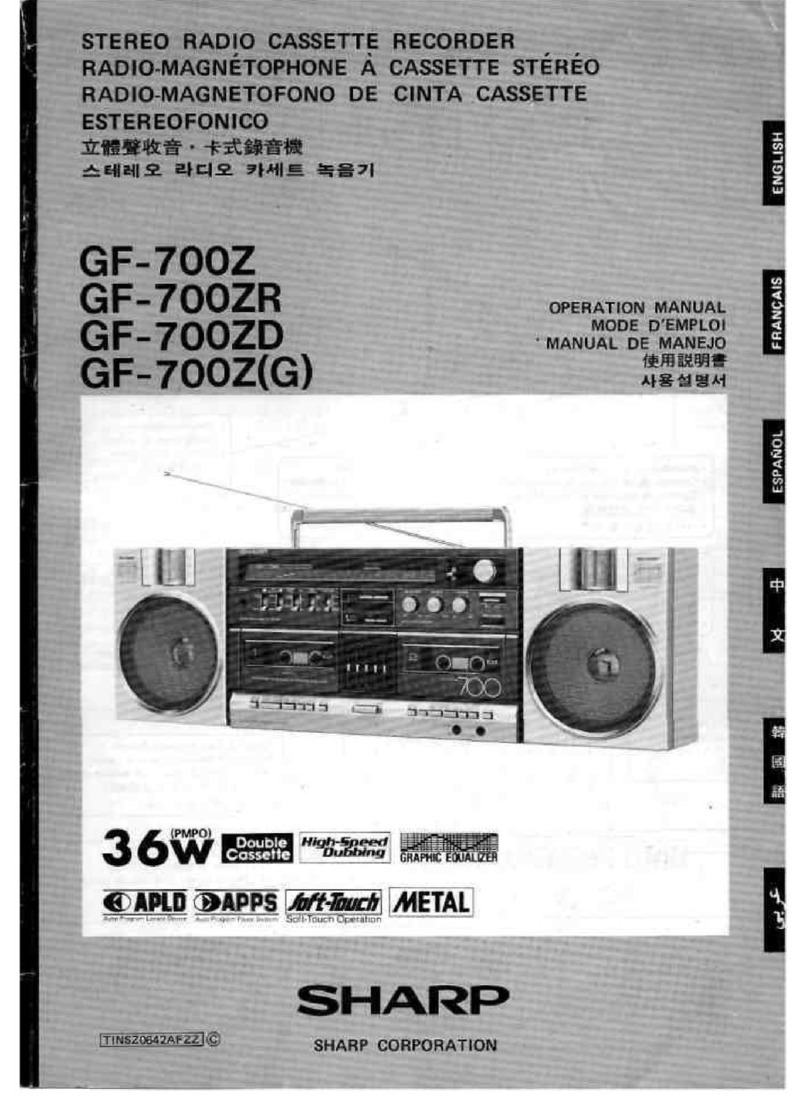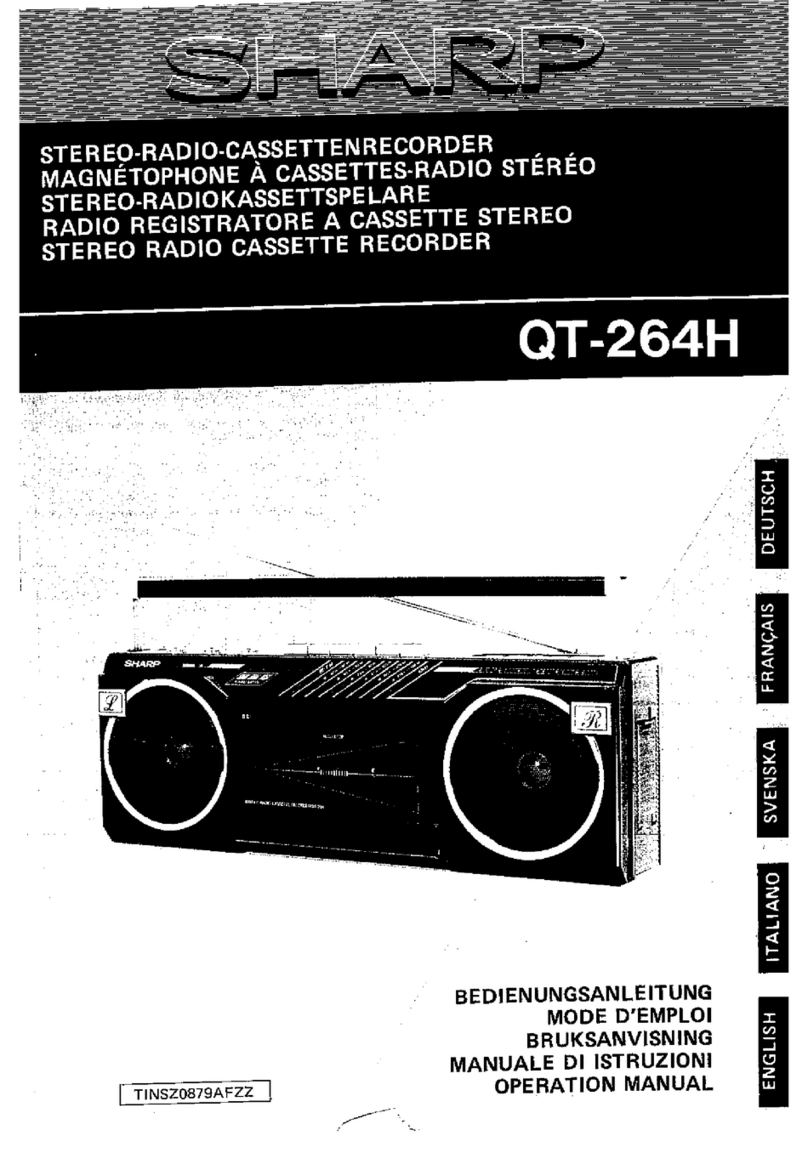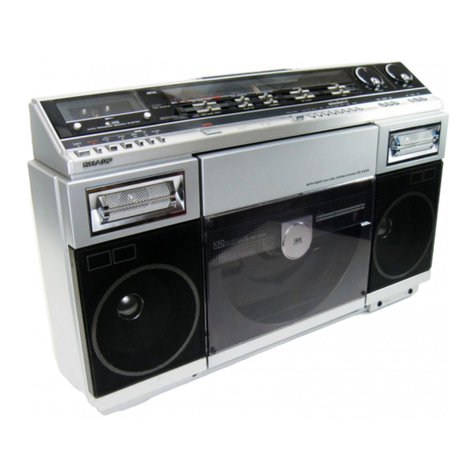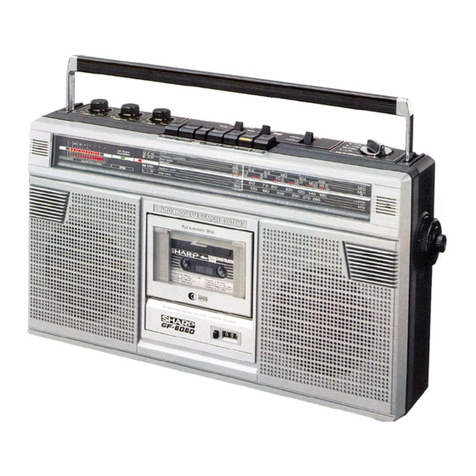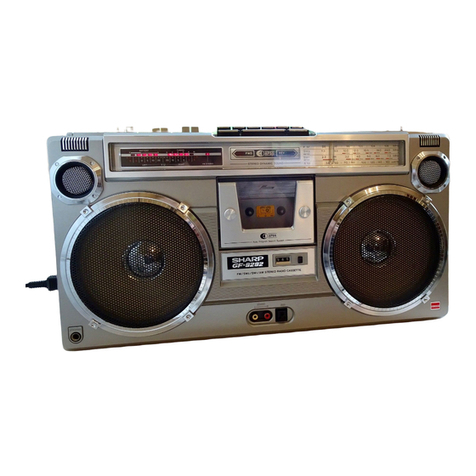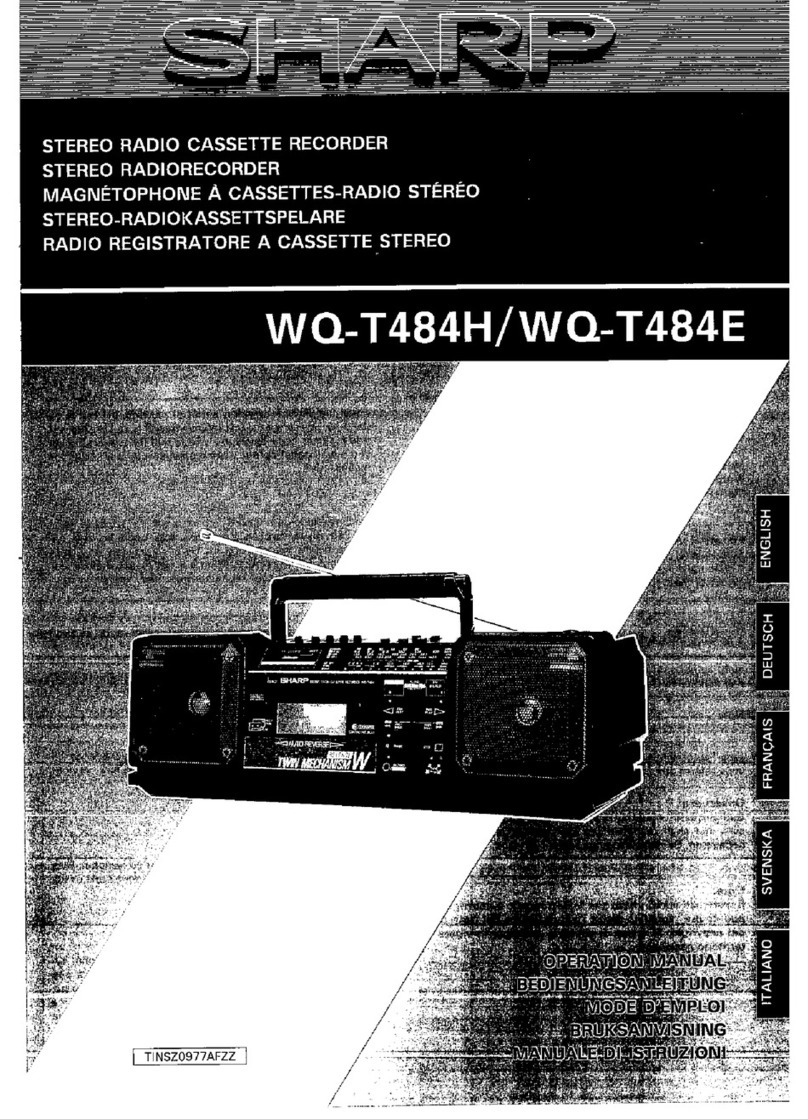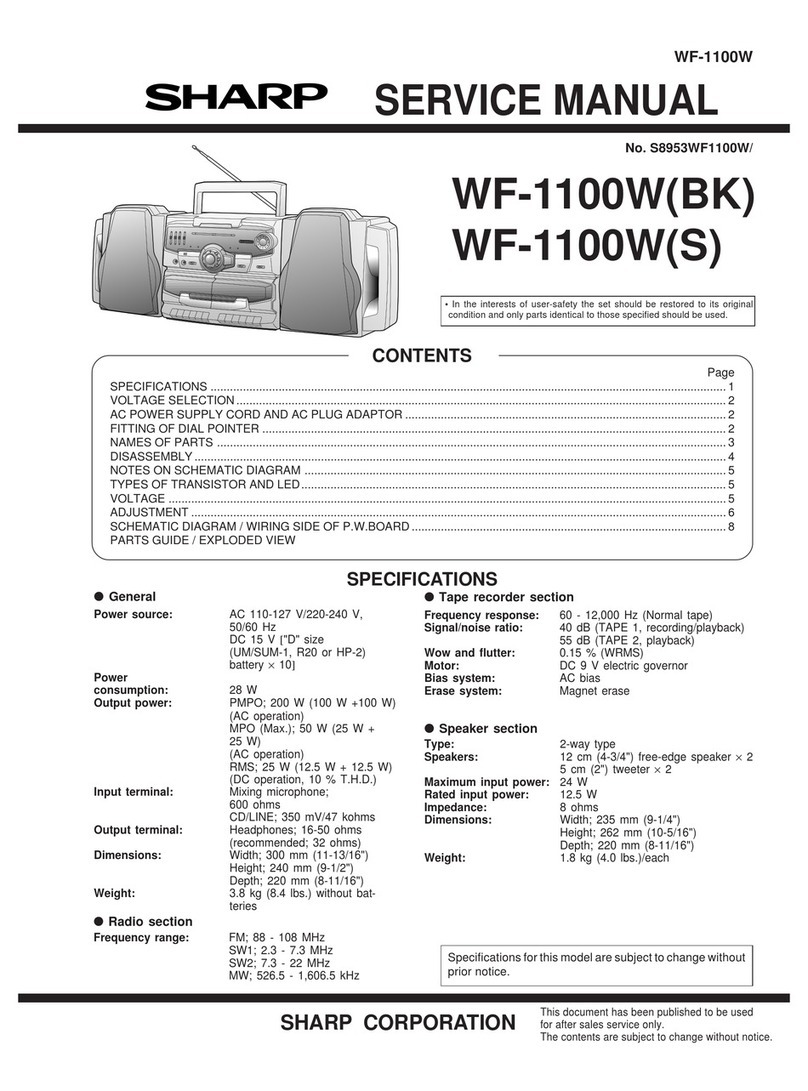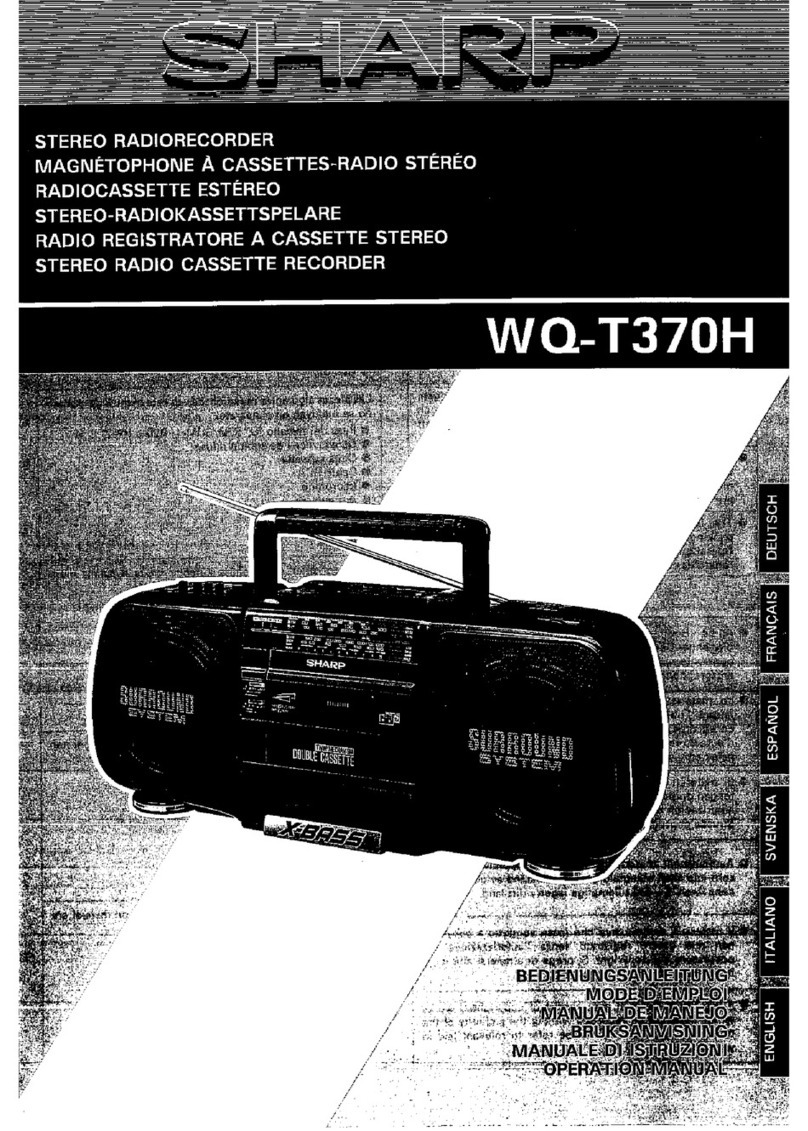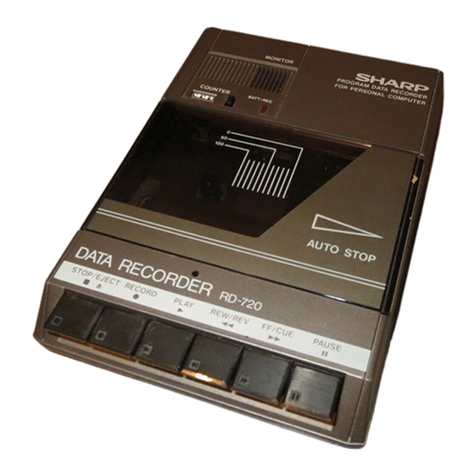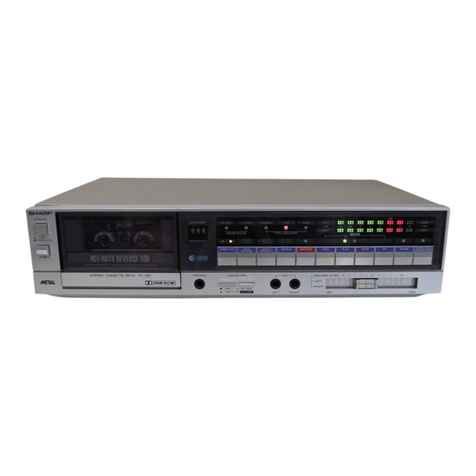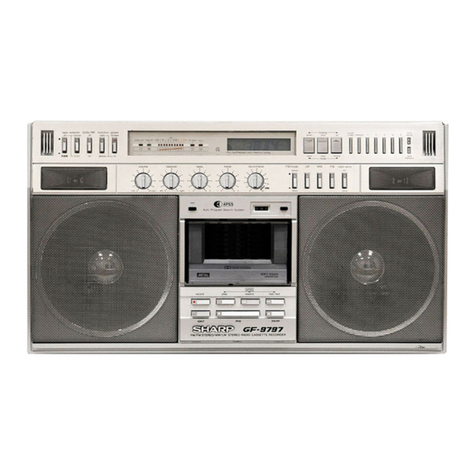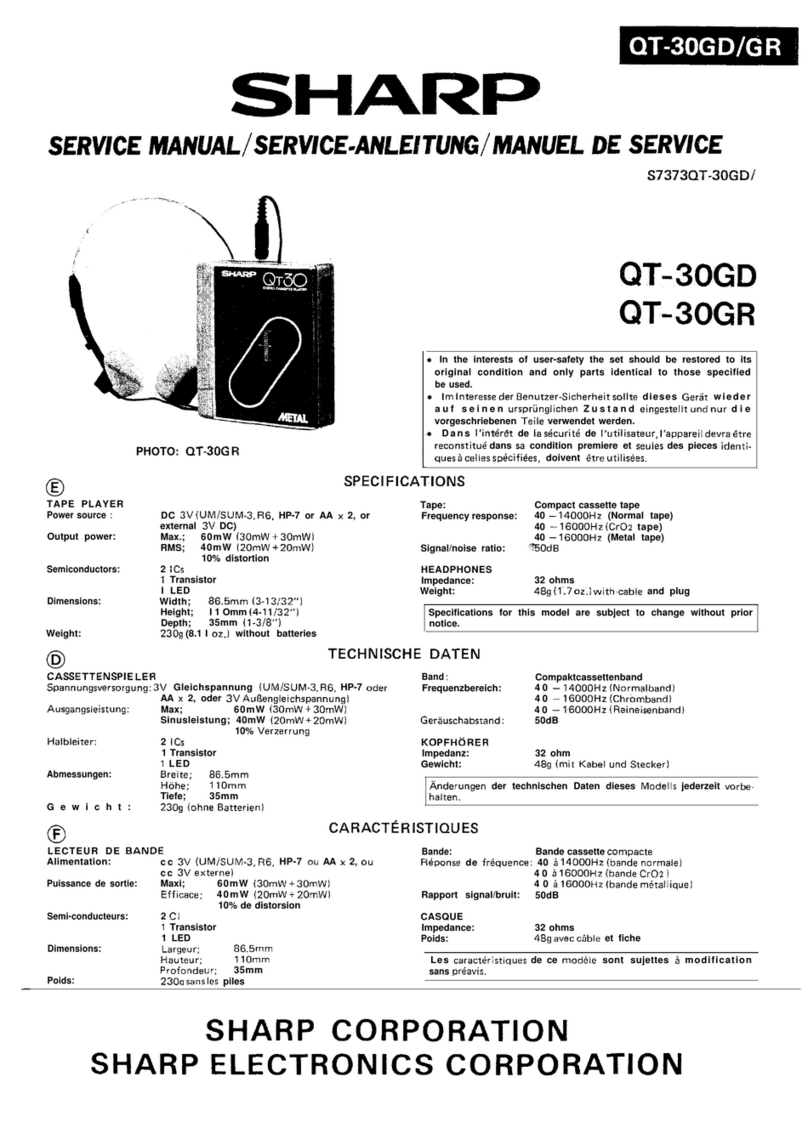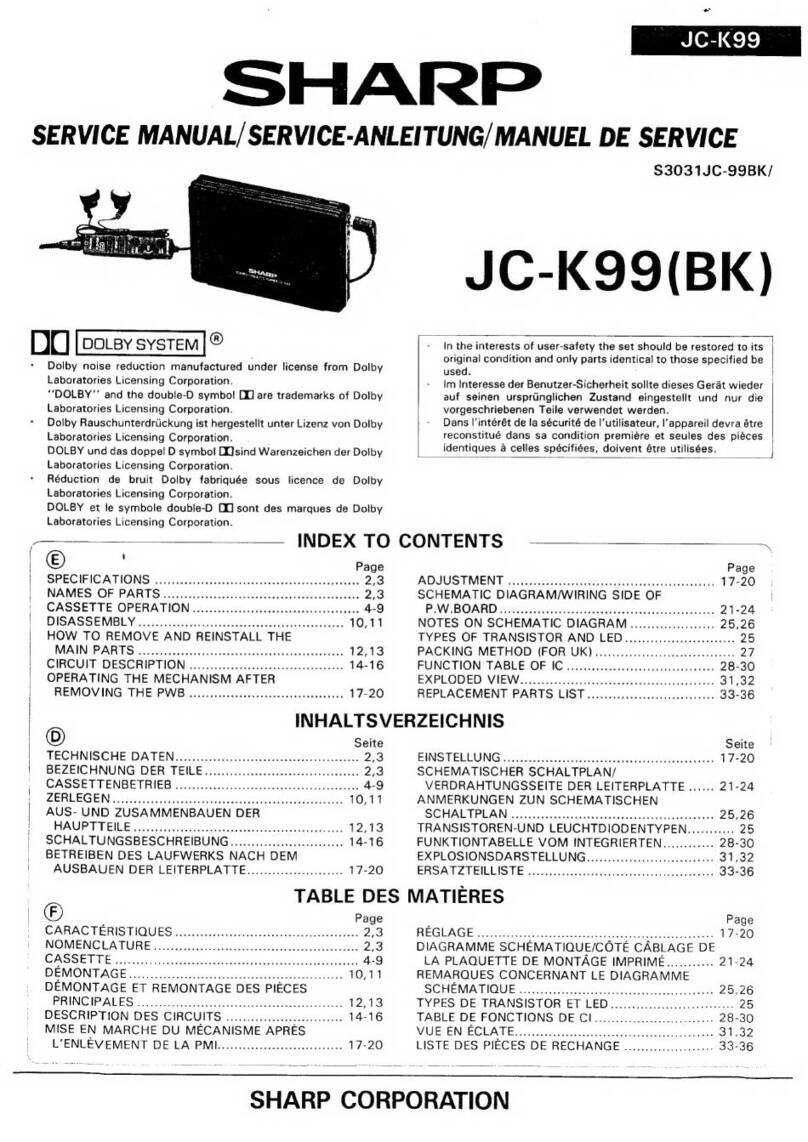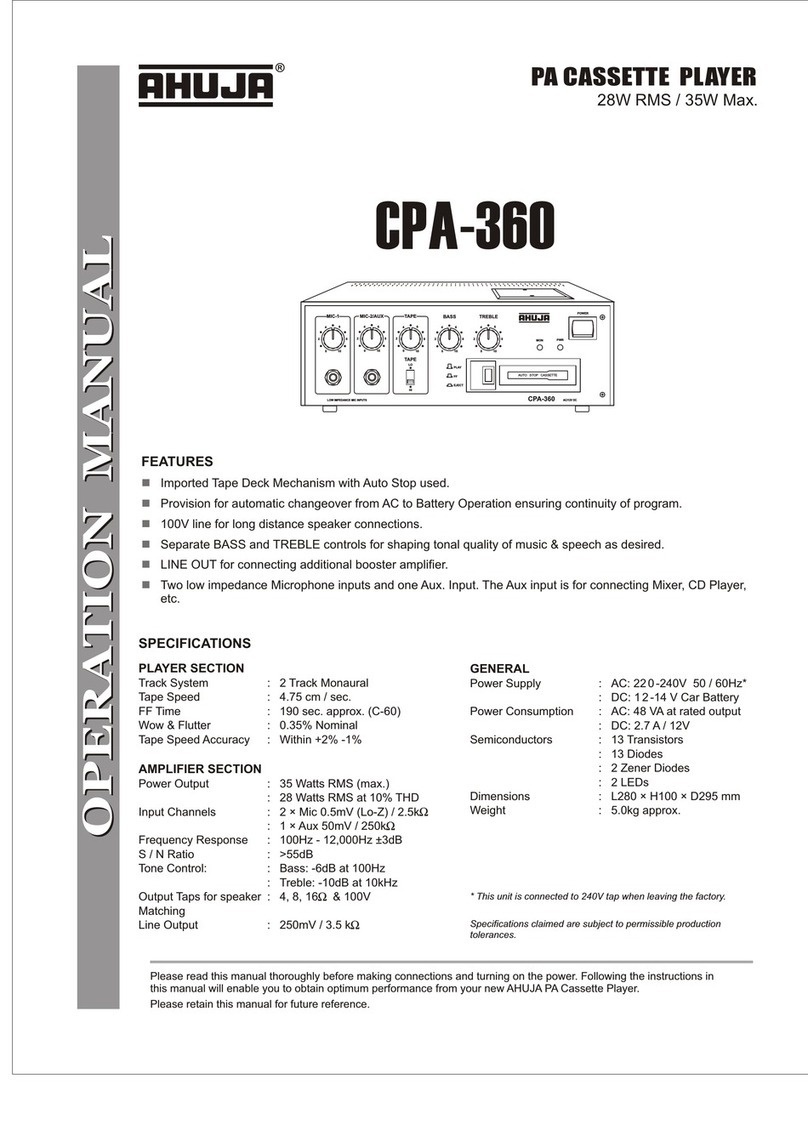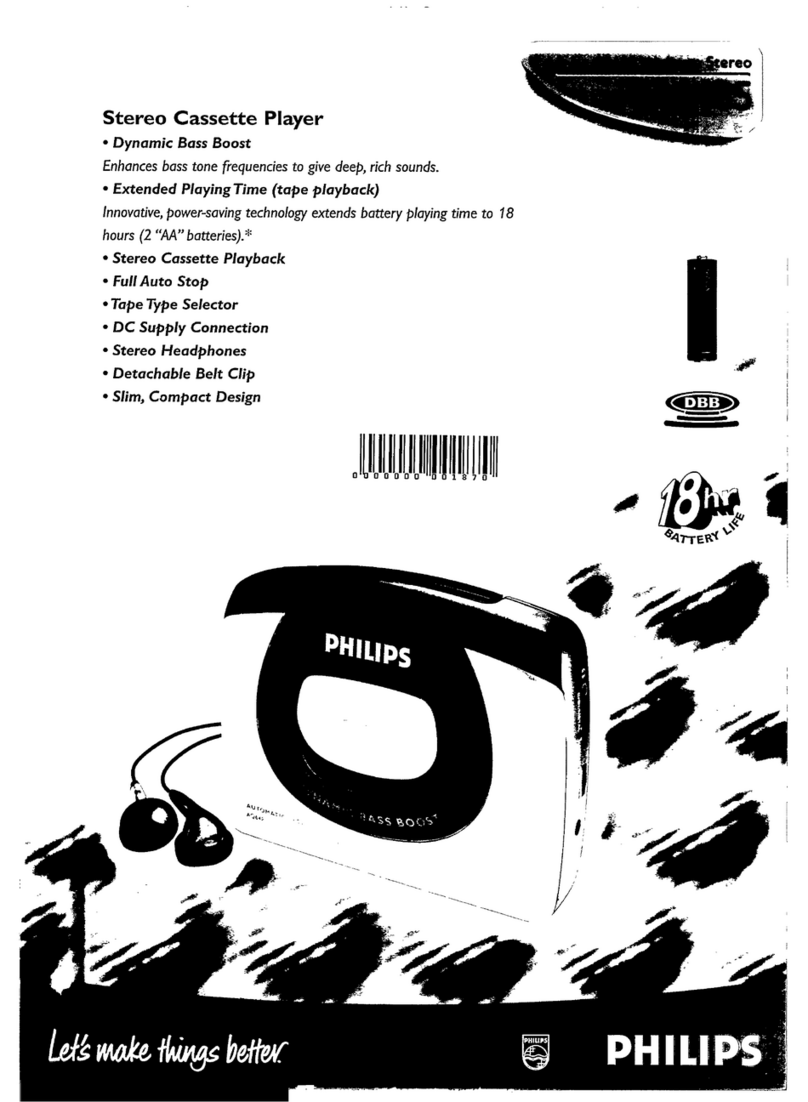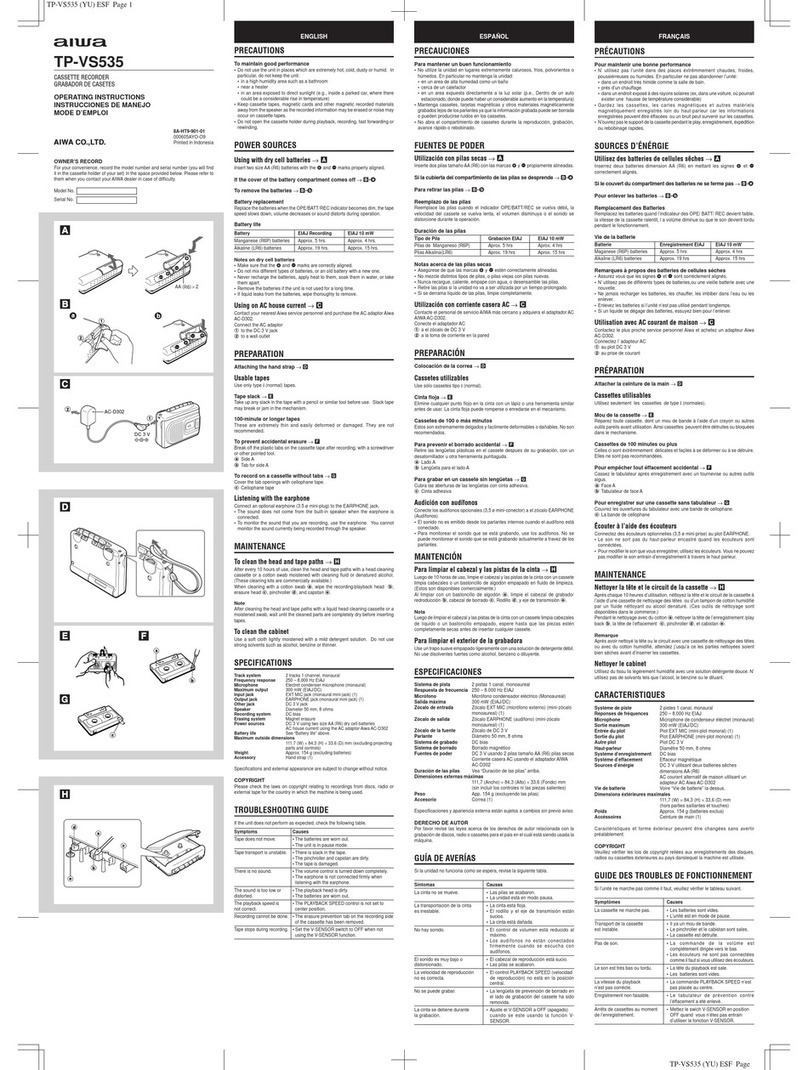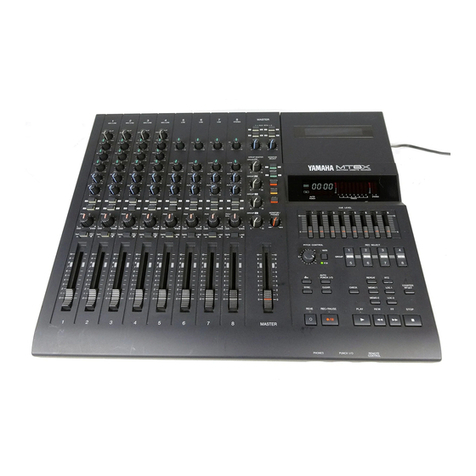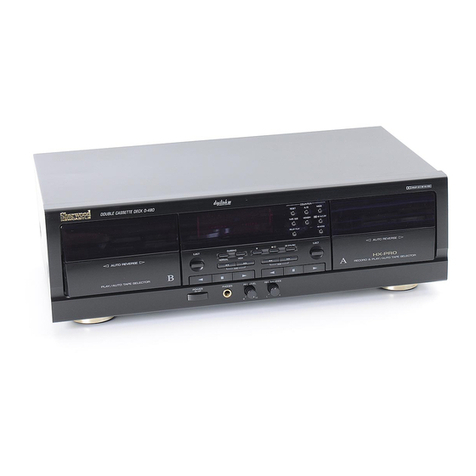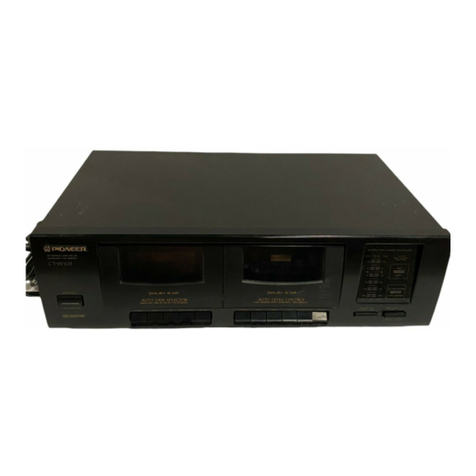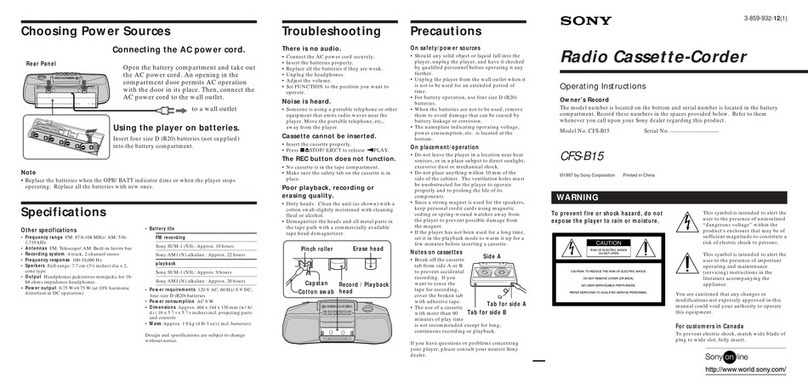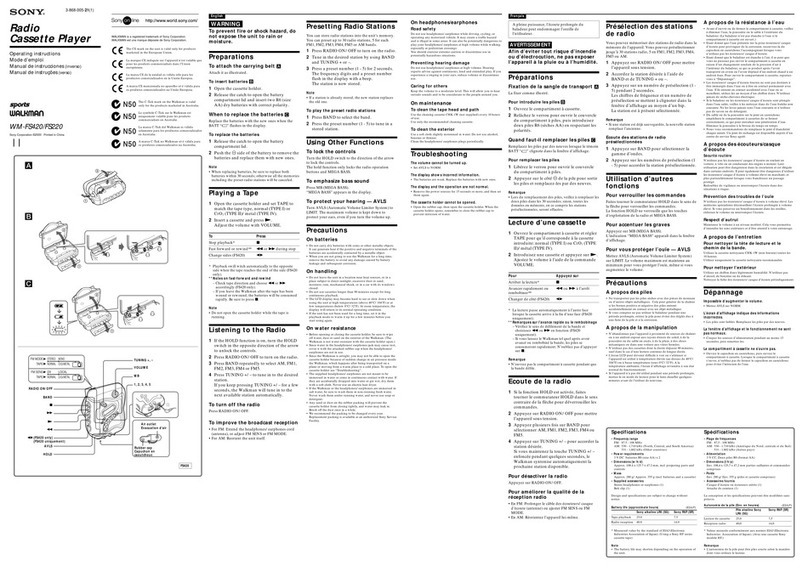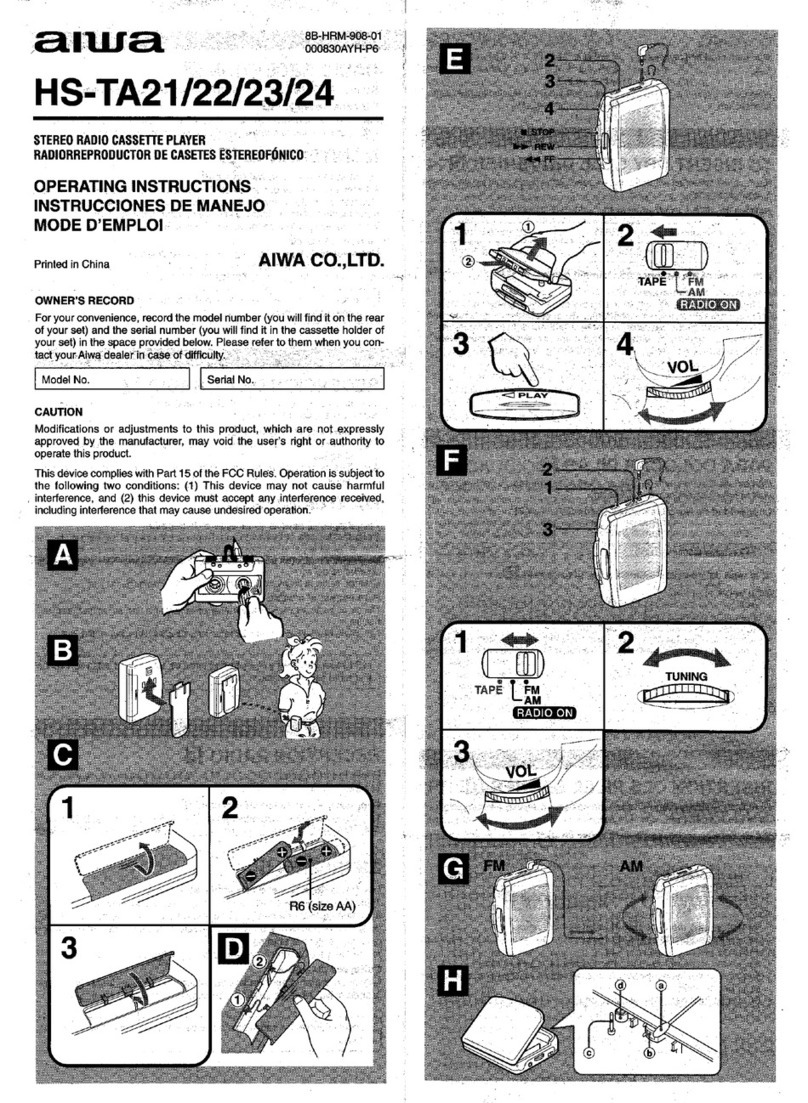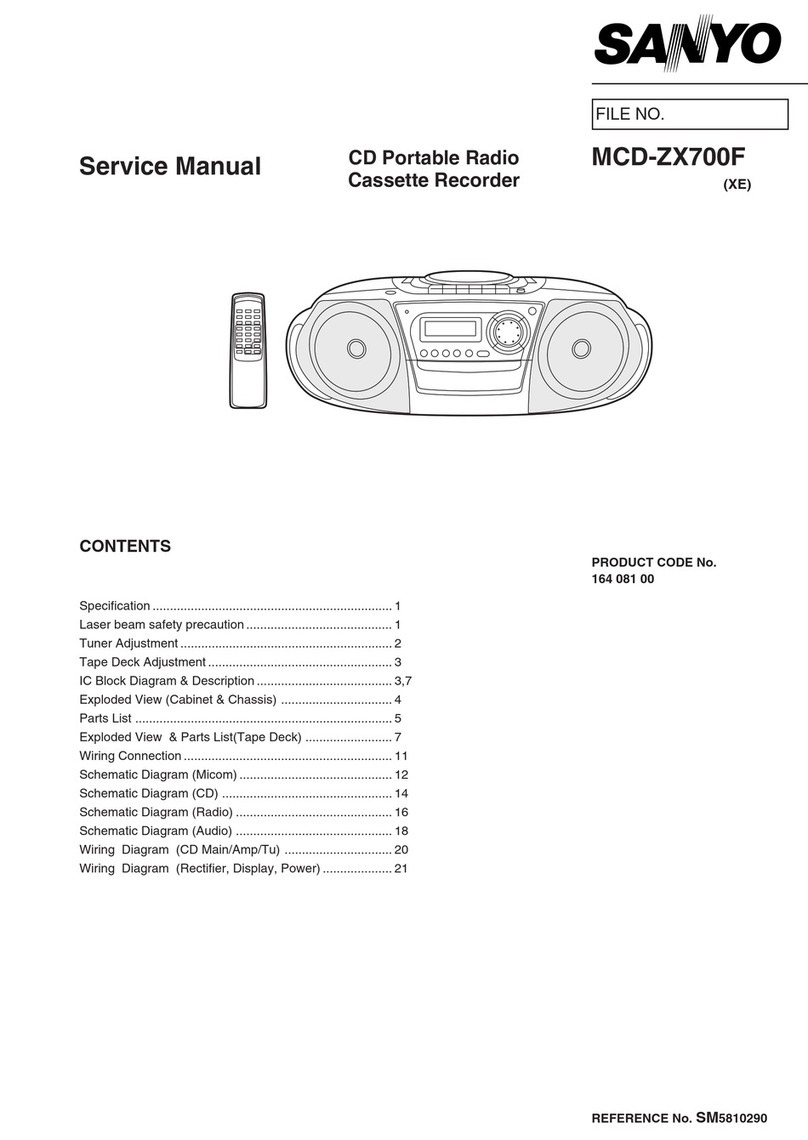
QT-222W
– 7 –
1 MW IF: 455 kHz (1) AM IF sweep Let the MW ANT Take out the signal Adjust T105 get MAX. (1) Band SW in MW
generator with coil close to the from point TP4 output at 455 kHz position
loop antenna generator ANT. (2) VOL. control in MIN.
(2) Alignment position
oscilloscope (3) Tune P.V.C. to
(3) Power supply high end
2 MW (1) MW sweep Same as step 1 Same as step 1 Adjust P.V.C. (TC3) Same as step 1
TRACKING fH: generator with get MAX. output at
1,650 kHz antenna 1,650 kHz
(2) Alignment
oscilloscope
(3) Power supply
3 MW BAND Same as step 2 Same as step 1 Same as step 1 Adjust T101 to get Tune P.V.C. to low
COVERAGE fL: MAX. output at 515 kHz end
515 kHz
4 Repeat step 2, 3 until no further improvement can be made.
5 MW BAND Same as step 2 Same as step 1 Same as step 1 Adjust P.V.C. (TC4) Tune P.V.C. to
COVERAGE fH: get MAX. output at 1.400 kHz
1,400 kHz 1,400 kHz
6 MW TRACKING Same as step 2 Same as step 1 Same as step 1 Adjust L109 get MAX. Tune P.V.C. to
fL: 600 kHz output at 600 kHz 600 kHz
7 Repeat step 5, 6 and then step 2, 3, 5,6 until no further improvement can be made.
Step Alignment
Frequency Test Equipment Signal-in Signal-out Adjust Remark
MW Section
1 SW1 BAND (1) SW1 sweep Let the MW ANT Take out the signal Adjust CT103 get MAX. (1) Band SW in SW1
COVERAGE fH: generator with coil close to the from point TP4 output at 7.4 MHz position
7.4 MHz antenna generator ANT. (2) VOL. control in MIN.
(2) Alignment point TP1 position
oscilloscope (3) Tune P.V.C. to
(3) Power supply high end
2 SW1 BAND Same as step 1 Same as step 1 Same as step 1 Adjust T102 get MAX. Tune P.V.C. to low
COVERAGE fL: output at 2.25 MHz end
2.25MHz
3 Repeat step 1, 2 until no further improvement can be made.
4 SW1 Same as step 1 Same as step 1 Same as step 1 Adjust CT101 get MAX. Tune P.V.C. to 6 MHz
TRACKING fH: output at 6 MHz
6 MHz
5 SW1 Same as step 1 Same as step 1 Same as step 1 Adjust L109 get MAX. Tune P.V.C. to
TRACKING fL: output at 2.6 MHz 2.6 MHz
2.6 MHz
6 Repeat step 4, 5 and then step 1, 2, 4, 5 until no further improvement can be made.
Step Alignment
Frequency Test Equipment Signal-in Signal-out Adjust Remark
SW1 Section
1 SW2 BAND (1) SW2 sweep Inject the RF Take out the signal Adjust CT104 get MAX. (1) Band SW in SW2
COVERAGE fH: generator signal directly to from point TP4 output at 22.5 MHz position
22.5 MHz (2) Alignment point TP1 (2) VOL. control in MIN.
oscilloscope position
(3) Power supply (3) Tune P.V.C. to
high end
2 SW2 BAND Same as step 1 Same as step 1 Same as step 1 Adjust T103 get MAX. Tune P.V.C. to low
COVERAGE fL: output at 7.2 MHz end
7.2 MHz
3 Repeat step 1, 2 until no further improvement can be made.
4 SW2 Same as step 1 Same as step 1 Same as step 1 Adjust CT102 get MAX. Tune P.V.C. to
TRACKING fH: output at 19 MHz 19 MHz
19 MHz
5 SW2 Same as step 1 Same as step 1 Same as step 1 Adjust T104 get MAX. Tune P.V.C. to
TRACKING fL: output at 8.5 MHz 8.5 MHz
8.5 MHz
6 Repeat step 4, 5 and then step 1, 2, 4, 5 until no further improvement can be made.
Step Alignment
Frequency Test Equipment Signal-in Signal-out Adjust Remark
SW2 Section

